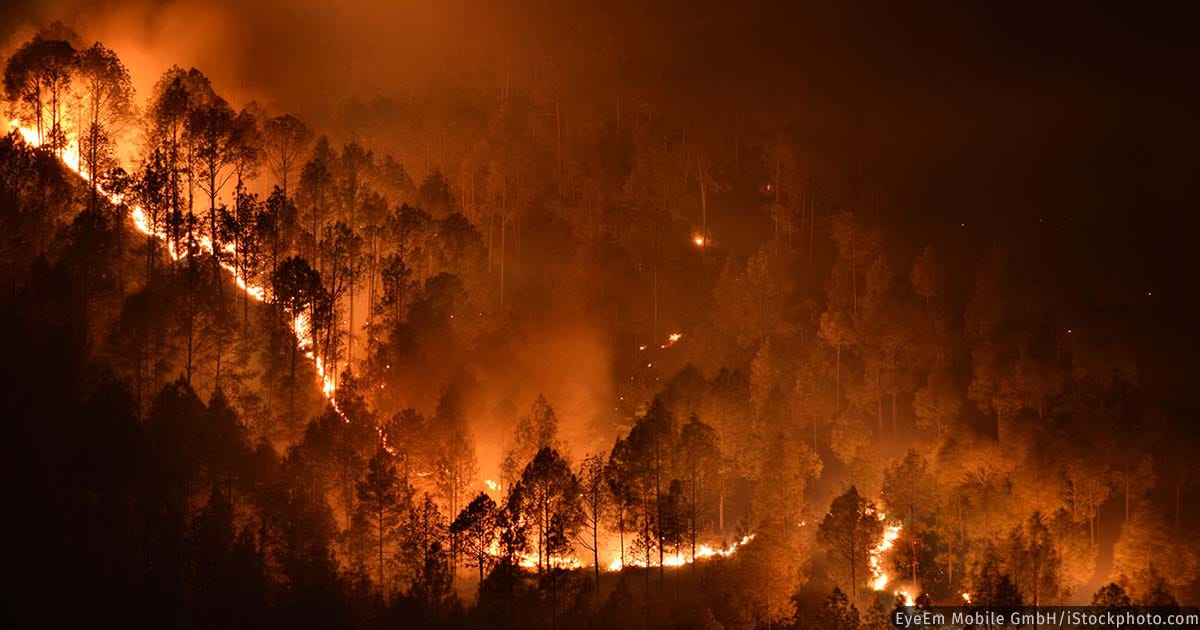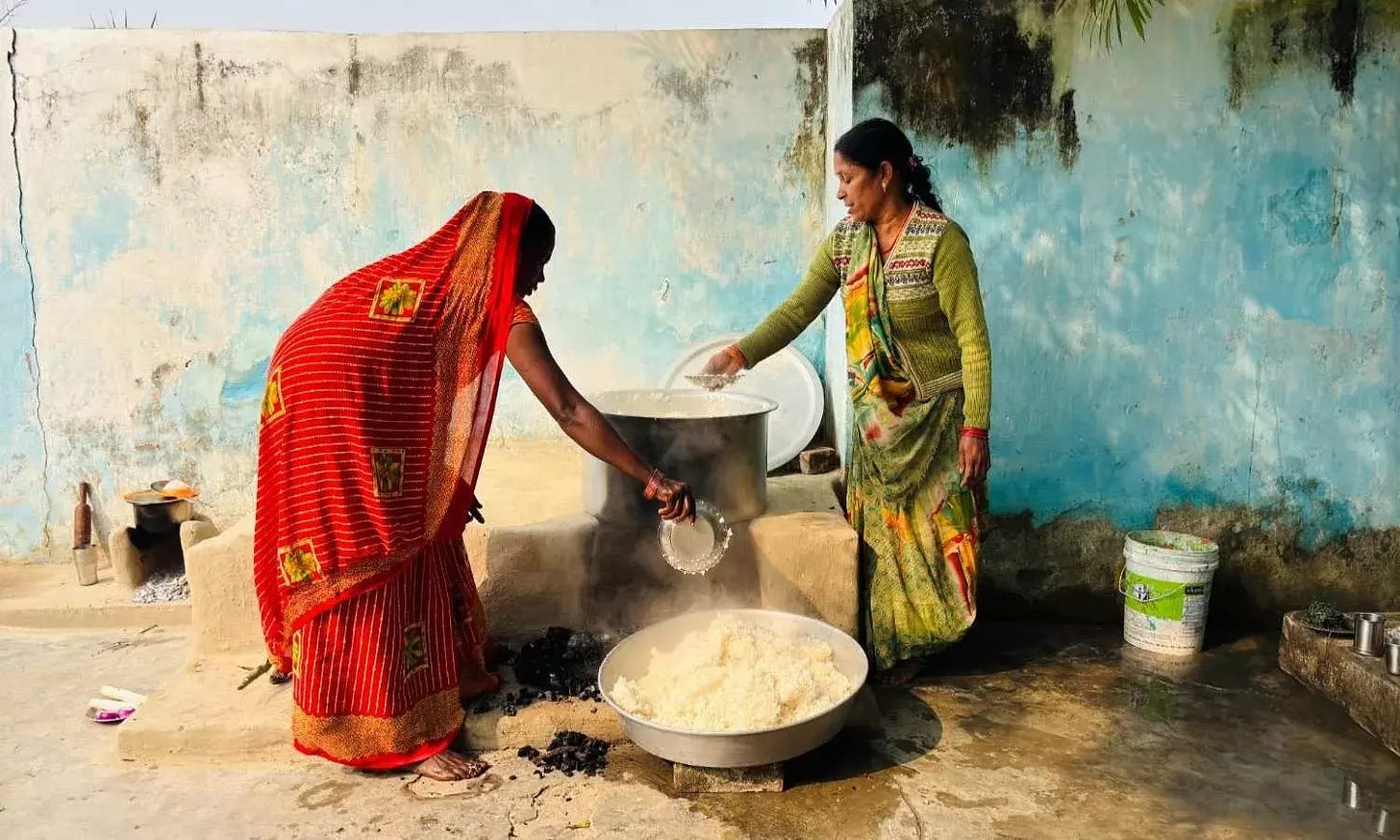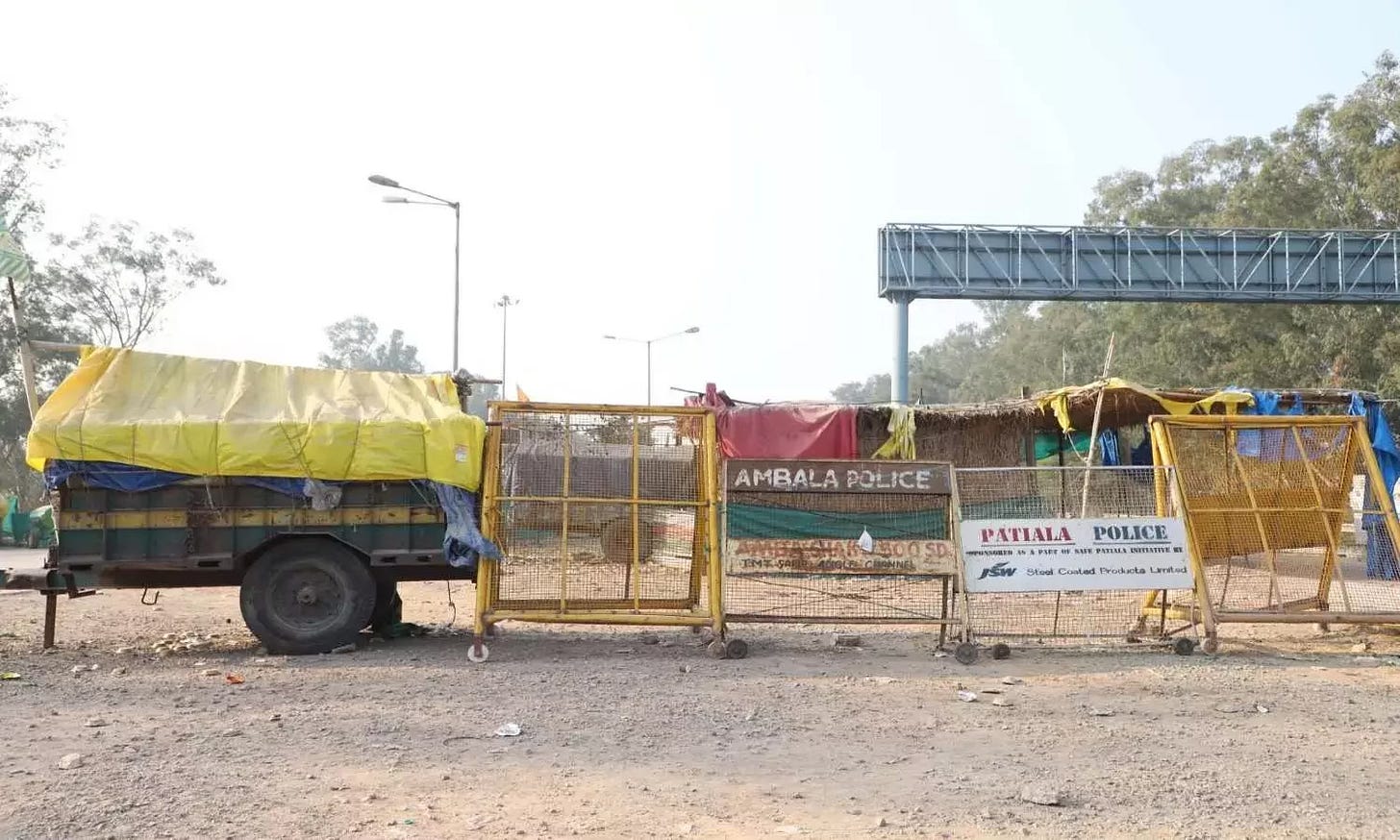India's Wildfire Woes
Also this week, why contributory pension schemes are not meeting targets, and what you should know about the HMPV virus
This week, we look at three stories, each a critical thread in India's evolving social and environmental story. From the blazing forests of Himachal Pradesh where a 75-year-old woman lost her life while she was tending her fields, to sterile hospital corridors where doctors monitor HMPV cases, to the quiet desperation of aging workers without pensions—these stories illuminate various aspects of the pressing challenges facing modern India.
IN the shadow of India's pine forests, a story of loss and resilience unfolds. In Bhagetu village, Himachal Pradesh, the death of a 75-year-old woman in a forest fire signposted a growing crisis as climate change intensifies wildfire seasons across the country.
Village head Ajay Kumar Chandel remembers when dense chir pine forests obscured the ground. Today, those canopies have thinned out and bare browning earth is visible—a testament to recurring forest fires that prevent saplings from reaching maturity. Across India, forest fires have surged dramatically, from 8,430 in 2005 to over 100,000 in 2021.
Absent focussed government strategies, the ray of hope that emerges is through community-led conservation. In Uttarakhand's unique Van Panchayats (community-managed forests), local stewardship has proven remarkably effective at fire prevention. When flames threatened Shunkhdhura village in 2024, twenty villagers fought the blaze for three days. As Malika Virdi, a local leader, notes: "When people own forests, they protect it." However, this model now faces challenges as authorities seek to merge Van Panchayats into larger administrative units, a move that can potentially weaken the community bonds that have safeguarded these vital ecosystems. Read Charu Bahri's report.
IN a sobering conversation with IndiaSpend's Shreehari Paliath that cuts through recent media hysteria, leading epidemiologist Gautam Menon offers reassurance about the Human Metapneumovirus (HMPV) cases reported in India. While seven cases have emerged, primarily in infants and young children in Bengaluru and Gujarat, Menon—who serves on the Lancet Commission and WHO's Technical Advisory Group—emphasizes that this decades-old virus is a routine winter respiratory infection.
Unlike the unprecedented challenge of COVID-19's second wave, HMPV typically causes mild symptoms in most people due to existing immunity. Menon shifts our attention to a more pressing concern: the potential for bird flu (H5N1) to adapt for human-to-human transmission. This threat, he suggests, demands preparation, including the revival of dormant oxygen plants that have been dormant since the pandemic's peak.
As far as HMPV is concerned, standard precautions suffice for now—handwashing, masks around vulnerable individuals, and protecting the elderly and very young. As Menon notes, the current surge in media attention stems more from the triggering combination of "China" and "virus" than any inherent cause for alarm. In conversation with Shreehari Paliath.
A quiet crisis is unfolding across the country as millions of elderly citizens face their twilight years with empty pockets and fading hopes. The nation's existing pension system, designed for a different era, leaves vast swathes of its aging population vulnerable, with only one in four Indians having any form of pension coverage.
For 72-year-old Maya Devi who lives in Delhi's crowded lanes, this translates to a stark reality: choosing between medicine and meals. Her monthly pension of Rs 2,500 barely covers two weeks of basic needs, forcing her to depend on her already struggling children. Devi's story is representative of the millions of elderly Indians caught in a widening gap between dignity and destitution.
The crisis deepens as India's elderly population surges past 104 million, with projections showing this number doubling by 2050. Yet the pension system remains frozen in time, offering rates that haven't kept pace with inflation and excluding the vast informal sector where 90% of Indians work. This institutional failure threatens to unravel the social fabric of a society where familial support systems are already strained by urbanization and changing social norms. Suchak Patel reports.
IN the Hindi edition of IndiaSpend, Mithilesh Dubey and Dharmendra Rajput report on the plight of the women who cook and serve mid-day meals for lakhs of children, but who themselves only earn Rs 55 for a full day's work. How will we eat, they ask; their questions disappear into an administrative void.
IN Haryana, a farmers' protest has been going on for the better part of two years, with no end in sight. Why? Because a crippling combination of mounting expenses, declining prices for their produce, and the crushing pressure of mounting debt has made life untenable for the farmers. At the heart of this protest is the farmers' demand for an equitable MSP—a demand that continues to fall on deaf governmental years. Manoj Kumar reports on a grim, existential struggle.






